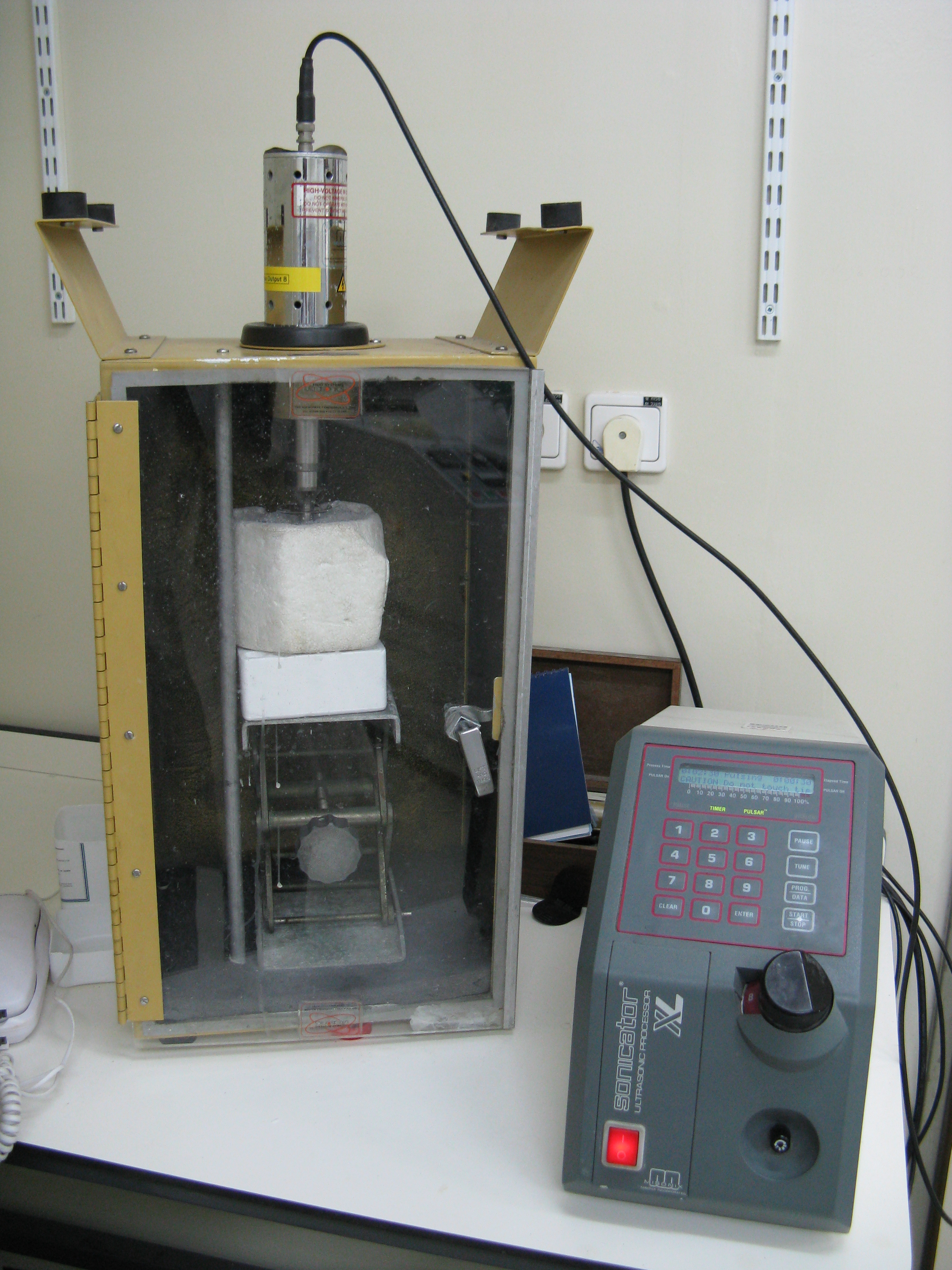Sonication
Sonication is the act of applying sound (usually ultrasound) energy to agitate particles in a sample, for various purposes. In the laboratory, it is usually applied using an ultrasonic bath or an ultrasonic probe, colloquially known as a sonicator. In a paper machine, an ultrasonic foil can distribute cellulose fibres more uniformly and strengthen the paper.
Sonication has numerous effects, both chemical and physical. The chemical effects of ultrasound, i.e., sonochemistry is concerned with understanding the effect of sonic waves on chemical systems. The chemical effects of ultrasound do not come from a direct interaction with molecular species. Studies have shown that no direct coupling of the acoustic field with chemical species on a molecular level can account for sonochemistry[1] or sonoluminescence.[2] Instead, sonochemistry arises from acoustic cavitation: the formation, growth, and implosive collapse of bubbles in a liquid.[3]
Sonication can be used to speed dissolution, by breaking intermolecular interactions. It is especially useful when it is not possible to stir the sample, as with NMR tubes. It may also be used to provide the energy for certain chemical reactions to proceed. Sonication can be used to remove dissolved gases from liquids (degassing) by sonicating the liquid while it is under a vacuum. This is an alternative to the freeze-pump-thaw and sparging methods.
In biological applications, sonication may be sufficient to disrupt or deactivate a biological material. For example, sonication is often used to disrupt cell membranes and release cellular contents. This process is called sonoporation. Sonication is also use to fragment molecules of DNA, in which the DNA subjected to brief periods of sonication is sheared into smaller fragments.
Sonication is commonly used in nanotechnology for evenly dispersing nanoparticles in liquids.
Sonication is the mechanism used in ultrasonic cleaning; loosening particles adhering to surfaces. Outside the field of laboratory science, sonicating baths are used to clean objects such as spectacles and jewelry.
Sonication is also used to extract microfossils from rock.[4]
Sonication can also refer to buzz pollination – the process that bees use to shake pollen from flowers by vibrating their wing muscles.
See also
Notes
Some of this article is reused from the Wikipedia article.
References
- ↑ Suslick, K. S. "Sonochemistry," Science 1990, 247, 1439-1445.
- ↑ Suslick, K. S.; Flannigan, D. J. “Inside a Collapsing Bubble, Sonoluminescence and Conditions during Cavitation” Annual Rev. Phys. Chem. 2008, 59, 659-683.
- ↑ Suslick, Kenneth S. (February 1989). The Chemical Effects of Ultrasound. Scientific American. pp.62-68 (p.62)
- ↑ Gensel, P.G.; Johnson, N.G.; Strother, P.K. (1990). "Early Land Plant Debris (Hooker's" Waifs and Strays"?)". PALAIOS 5 (6): 520–547. doi:10.2307/3514860. JSTOR 3514860.










